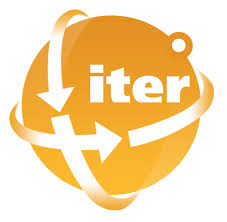Part 2 of 2 Parts (Please read Part 1 first)
On January 5th, 2022, there was a meeting between the ITER organization, ASN, and another French nuclear regulator called Institut de Radioprotection et de Sûreté Nucléaire (IRSN) in an attempt to resolve the impassed being caused by the damaged sections.
Michel Claessens is a former spokesperson for the ITER organization who still maintains contacts with people inside the organization. He said, “During a special meeting of the steering committee with ASN, IRSN, and the ITER organization on Jan. 5, 2022, ASN announced that the reactor assembly is not authorized, which means, in practice, a shutdown of the project.” ASN told the ITER organization that they were not satisfied with other aspects of the current reactor design because the present excessive risks of ionizing radiation exposure for workers.
Bernard Doroszczuk is the chairman of the board of ASN. On January 25th, 2022, he sent a letter to Bernard Bigot who is the director-general of the ITER organization. He told Bigot that Bigot is not authorized to lower the two sections into the reactor chamber unless the ITER organization can guarantee that the installed sections can later be separated and removed. He added that “Consequently, the assembly of the tokamak cannot be authorized. The welding of these sections inside the tokamak pit would represent an irreversible operation. This would require ASN’s formal approval before it can take place.”
These are excerpts from Doroszczuk’s letter to Bigot:
“As is evident from the in-depth examination of your file and the many technical exchanges held between your teams and the ASN departments as well as the IRSN experts, the following elements apply:
– The “neutron budget” values that you anticipate during the operation of the installation are greater than the maximum neutron fluence to be taken into account for the dimensioning of installation.
– The elements received concerning the radiological maps do not make it possible to demonstrate that the limitation of exposure to ionizing radiation is controlled, a major challenge for an installation of nuclear fusion.
– In particular, the progressive activation of materials under the effect of intense neutron flux is not properly taken into account, and the exposure of workers in adjoining premises to nuclear buildings should be assessed with realistic conservative assumptions.
Given the elements noted above, ASN considers that this condition is not satisfied at this stage. Thus, the hold point related to the tokamak assembly cannot be lifted before February 1, 2022. Consequently, the assembly of the tokamak is suspended. In the immediate future, I urge you not to take any action that is difficult to reverse concerning the sectors of the vacuum chamber affected by dimensional non-conformities, so as not to impede your capacity to carry out the repairs that would be deemed useful with a view to their welding.
I invite you to make sure that you have a stabilized design of all the equipment associated with the vacuum chamber, the overall consistency of your sizing, with regard to all the requirements that you had set yourselves regarding the protection of workers, the public, and the environment, and the proper accounting of deviations and defects already noted during construction. An in-depth design review needs to be carried out before you again seek authorization to start assembling the tokamak equipment inside the cryostat.”
